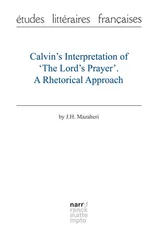Helge Fauskanger - J.R.R. Tolkien’s Lord’s prayer and Hail Mary in Quenya - Syntactical and Etymological Analysis
Здесь есть возможность читать онлайн «Helge Fauskanger - J.R.R. Tolkien’s Lord’s prayer and Hail Mary in Quenya - Syntactical and Etymological Analysis» весь текст электронной книги совершенно бесплатно (целиком полную версию без сокращений). В некоторых случаях можно слушать аудио, скачать через торрент в формате fb2 и присутствует краткое содержание. Жанр: Языкознание, на английском языке. Описание произведения, (предисловие) а так же отзывы посетителей доступны на портале библиотеки ЛибКат.
- Название:J.R.R. Tolkien’s Lord’s prayer and Hail Mary in Quenya: Syntactical and Etymological Analysis
- Автор:
- Жанр:
- Год:неизвестен
- ISBN:нет данных
- Рейтинг книги:5 / 5. Голосов: 1
-
Избранное:Добавить в избранное
- Отзывы:
-
Ваша оценка:
- 100
- 1
- 2
- 3
- 4
- 5
J.R.R. Tolkien’s Lord’s prayer and Hail Mary in Quenya: Syntactical and Etymological Analysis: краткое содержание, описание и аннотация
Предлагаем к чтению аннотацию, описание, краткое содержание или предисловие (зависит от того, что написал сам автор книги «J.R.R. Tolkien’s Lord’s prayer and Hail Mary in Quenya: Syntactical and Etymological Analysis»). Если вы не нашли необходимую информацию о книге — напишите в комментариях, мы постараемся отыскать её.
J.R.R. Tolkien’s Lord’s prayer and Hail Mary in Quenya: Syntactical and Etymological Analysis — читать онлайн бесплатно полную книгу (весь текст) целиком
Ниже представлен текст книги, разбитый по страницам. Система сохранения места последней прочитанной страницы, позволяет с удобством читать онлайн бесплатно книгу «J.R.R. Tolkien’s Lord’s prayer and Hail Mary in Quenya: Syntactical and Etymological Analysis», без необходимости каждый раз заново искать на чём Вы остановились. Поставьте закладку, и сможете в любой момент перейти на страницу, на которой закончили чтение.
Интервал:
Закладка:
etelehta, verb free , release , deliver . It would seem that the # lehta- part is essentially the same as the Quenya verb lehta loose , slacken listed in the Etymologies , in LR:368 derived from a stem lek- loose , let loose , release (primitive * lektâ-; this would be one of the cases where the ending - tâadds nothing to the meaning of the stem itself). It is closely related to Noldorin/Sindarin leithia release (as verb; noun leithian, as in the Lay of Leithian or "Release from Bondage" referred to in the first paragraph of Chapter 19 in the Silmarillion ). Unlike the more mundane meaning of Quenya lehta- loose , slacken , these Sindarin forms more prominently seem to connote a release or freeing , and this is also true of the longer Quenya verb etelehta- in the text before us. The prefixed element ete- can evidently be equated with the Quenya prefix et- that in the Etymologies is derived from a stem et- forth , out (LR:356; the prefix as such is undefined, but it is clearly meant to have the same meaning as the stem). Etelehta- would seem to mean literally out-release or out-free (here in Norway we actually use the word utfri for "deliver" as in delivering someone from danger); the idea is that the object is brought "out" from the danger or menacing/suppressing situation. It is interesting to see that the prefix et- is lengthened to ete- where an impossible consonant cluster would otherwise occur (in this case ** tl). It may be that the second eis the stem-vowel of et- reduplicated; on the other hand, it may simply be the normal "connecting vowel" eas in the allative form Elendilenna to Elendil in PM:401 ( Elendil- e- nna). The short form of the prefix, et-, can actually occur only when it is prefixed to words beginning either in a vowel or in one of the consonants s-, t-, w- or y- (for t- we have an attested example: ettulerin SD:290). Otherwise the form ete- must be used to avoid impossible clusters. (However, in one old example, primitive etkelê* out-flow , tand kearly metathesized, and Quenya ehtele spring , issue of water comes from ektele. See LR:363 s.v. kel-. If this Quenya word had been coined later, instead of descending from the oldest period, it would perhaps have appeared as ** etekeleinstead.)
firuvamme, future-tense verb with pronominal ending: * we shall die . The verb fir- fade , die is mentioned in MC:223, clearly to be referred to the root phir- in the Etymologies (LR:381), which yields words having to do with death and mortality. The base itself was not defined in Etym., but in MR:250 it is explained that the verb fírë(read * firë?) originally "meant to expire , as of one sighing or releasing a deep breath… This word the Eldar afterwards used of the death of Men." A reference in WJ:387 confirms this; here the stem is quoted as phiri, glossed exhale , expire , breathe out . In the text before us, fir- occurs in the future tense, denoted by the well-known ending - uva(many attestations, e.g. kenuva shall see in MC:221 cf. 214 or hiruva shalt find in Namárië; in the present text it also occurs in the word tuluva, q.v.) The pronominal ending - mmedenotes exclusive we , that is, a "we" that does not include the person that is addressed. If one is talking about "we" to a person that is included in the "we" group, the ending - lmefor inclusive "we" would be employed. Previously, the exclusive ending - mmewas attested only in the word vamme we won’t in WJ:371. It corresponds to the independent pronouns # me(see áme) and emme, plus the possessive ending - mma our seen in Átaremma, massamma.
hanis evidently a preposition, but its meaning is uncertain: in ? among ? permeating ? above ? [17] VT43:14 quotes han = "beyond" from a very late (ca. 1970) manuscript.
This preposition, if that is what it is, would seem to describe the "spatial" relationship between Eru and Eä, God and the Universe – however that is to be imagined. No really plausible etymology can be offered. The stem khan- understand , comprehend (LR:363) could have yielded a word of this shape, but its meaning certainly seems to disqualify it. The stem kham- sit (ibid.) just might be relevant, if hanrefers to some kind of stationary position (final - mregularly becoming - nin Quenya). Unfortunately, all Christopher Tolkien reproduced of this entry in the Etymologies was the verb ham- sit ; "the other derivatives are too chaotic and unclear to present". – By another suggestion hancould be a variant of the known preposition an, in the Etymologies glossed "to, towards" (LR:374 s.v. na 2-); if so it is here used with a different shade of meaning, since "to" would not make much sense in this context. By this theory, the hprefixed to anis merely an intruding consonant inserted to avoid two a's in a sequence (the word before hanbeing ëa). However, no other Quenya examples of such an intruding hcan be quoted. – It may be noted that in a text reproduced in MC:217, apparently some variant of "Gnomish" (but somewhat closer to Sindarin than the Gnomish of the GL), there occurs a phrase han Nebrachar. This is translated above Nebrachar . We must of course be very wary about basing conclusions regarding LotR-style Quenya on an obscure Gnomish variant of the early thirties, but if the word hanhas the same meaning in the text before us, Átaremma i ëa han ëamight mean *our Father who is above Eä – as if Tolkien used a circumlocution instead of translating "who art in heaven" literally. (However, the normal Quenya word for above would seem to be or, as in Cirion’s Oath [18] In VT43 it is argued that i ëa han ëa means "who is beyond Eä", which would indeed be a circumlocution. The fact that han appears with the meaning "beyond" in a manuscript 15-20 years younger than the Lord’s Prayer text cannot be seen as conclusive regarding its meaning here. However, a variant version of the prayer used the word pella instead, a well-known Quenya word for "beyond". This suggests that "who is beyond Eä" may indeed be the intended meaning here.
.)
Héru, noun lord . Other sources, like the Silmarillion Appendix and the Etymologies , give heruwith a short e– though in Etym, a long vowel turns up in the "Old Noldorin" cognate khéro master (LR:364 s.v. kher-). In Letters:283, the Quenya word for lord is quoted as hér, Tolkien adding heruas a parenthetical alternative; the new form héruseems to combine these two alternatives. In VT41:9, reproducing a document dating from the late sixties, the Quenya word is again hér, which Tolkien here refers to Common Eldarin khêr. In PM:210 the Quenya word for lord is said to be " heru , hêr -"; this could be taken to mean that the word heruturns into hér- if you add an ending (e.g. genitive * héro), but it is uncertain precisely what Tolkien meant. Again héruapparently combines both heruand hér-. As for the etymology, the primitive form of heru(sic) is given as kherû master in Letters:178, 282; the root is there given as kher- possess (cf. kher- rule , govern , possess in the Etymologies , LR:364). The ending - ûmay simply denote a (masculine) animate, as in primitive atû father or * Erû the One (see the discussion of Eruunder Eruofor references), but in primitive kherûthe ending takes on an agental significance: In light of the root meaning, a kherûis a "lord" perceived as a possessor or ruler , governor . The variant form héruin the text before us must be assumed to represent an alternative primitive form * khêrûwith lengthening of the stem-vowel. Such lengthening is quite common (though not universal) in conjunction with another ending that can be either agental or simply masculine, namely - ô; for instance, the stem kan- cry yields a primitive noun kânô crier, herald (PM:361, 362; this is said to be an example of "the older and simplest agental form"). Perhaps, then, the much rarer ending - ûcould also be combined with lengthening of the stem-vowel. – A final possibility, suggested above in connection with the somewhat surprising form Átaremmarather than Ataremmafor our Father ( atar father having a short initial vowel in all other attestations), is that normal, common nouns may be strengthened by lengthening a vowel when they are used as divine titles. Hence atar> # Átarand perhaps likewise heru> Héru.
Читать дальшеИнтервал:
Закладка:
Похожие книги на «J.R.R. Tolkien’s Lord’s prayer and Hail Mary in Quenya: Syntactical and Etymological Analysis»
Представляем Вашему вниманию похожие книги на «J.R.R. Tolkien’s Lord’s prayer and Hail Mary in Quenya: Syntactical and Etymological Analysis» списком для выбора. Мы отобрали схожую по названию и смыслу литературу в надежде предоставить читателям больше вариантов отыскать новые, интересные, ещё непрочитанные произведения.
Обсуждение, отзывы о книге «J.R.R. Tolkien’s Lord’s prayer and Hail Mary in Quenya: Syntactical and Etymological Analysis» и просто собственные мнения читателей. Оставьте ваши комментарии, напишите, что Вы думаете о произведении, его смысле или главных героях. Укажите что конкретно понравилось, а что нет, и почему Вы так считаете.












